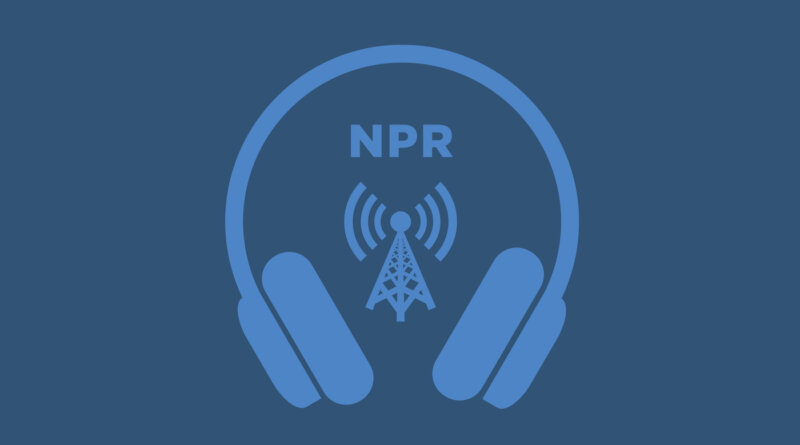Visiting sea lion rehab in California : NPR
Sea lions are part of the landscape and soundscape on the California coast. And when one of them is found sick or injured, it often ends up at The Marine Mammal Center in Sausalito.
AILSA CHANG, HOST:
While vacationing in California, NPR’s Chad Campbell could hear sea lions barking from an island about two miles away from his house.
(SOUNDBITE OF SEA LIONS BARKING)
CHANG: He wondered what they could be saying to each other, so he asked an expert to speculate.
ADAM RATNER: It could be announcing that there’s really yummy food over here. It could be, hey. Look at me. Look at me. It could be just wanting to be social. They enjoy being together.
CHAD CAMPBELL, BYLINE: Adam Ratner is the associate director of conservation education at the Marine Mammal Center.
RATNER: As you can hear, they’re constantly engaging with each other. It’s just one way that they are able to really tell each other what’s on their minds.
CAMPBELL: Ratner says this is the world’s largest hospital for marine mammals. Every year, they treat hundreds of sick, injured and malnourished animals that are rescued along the coast. The center also makes house calls to treat animals that don’t fit into a volunteer’s pickup truck.
RATNER: We’ve gone out and actually administered medication to animals that had been hit by boats. We’ve disentangled whales that have been caught in trash. So we can still give those really large animals that second chance they deserve.
CAMPBELL: The Marine Mammal Center has been here in Sausalito, Calif., for almost 50 years, near the Golden Gate Bridge on the Marin Headlands. It’s not easy to find, but annually, more than 100,000 visitors make their way to this upstairs viewing deck.
(SOUNDBITE OF SEA LIONS BARKING)
CAMPBELL: We can see a few dozen fenced-in pens, each with a small private swimming pool. When I visited, the hospital was caring for 65 patients – elephant seals, otters, harbor seals and their most common patient, the California sea lion.
RATNER: We’ve got around 25 of them at the hospital, including this big guy right in the front row, an adult male named Tagozee, that we rescued from Monterey County, suffering from a disease called leptospirosis, a bacterial infection of the kidneys.
CAMPBELL: Tagozee is not barking, just laying quietly in his pen. He is still hungry, though. And it’s nearly feeding time, so we head downstairs.
(SOUNDBITE OF GATE CREAKING)
CAMPBELL: Our first stop is the fish kitchen, where volunteers are preparing today’s lunch for the patients. Ratner says the animals can go through a thousand pounds of fish every day.
RATNER: For the young pups, we can make them different fish smoothies, whatever they might need to start building up that strength to eat food on their own.
CAMPBELL: The Marine Mammal Center is a nonprofit organization funded completely by donations. Its staff is supplemented by more than a thousand active volunteers, including Giancarlo Rulli, who is now the center’s spokesperson.
GIANCARLO RULLI: We have volunteers as young as 15 on our youth crew, and we have volunteers that are in their 90s. We could not do the work that we do every day without them. They’re contributing upwards of 150,000 hours every single year to our operations. It’s literally an army of volunteers.
CAMPBELL: We follow two of those volunteers as they prepare to feed Tagozee, the adult male sea lion suffering from leptospirosis. Here’s Adam Ratner again.
RATNER: He’s clearly ill. He’s got a disease, but he knows how to eat fish. So all we’re going to do is throw the fish into the water, let him chase after it, and that’s going to be his lunchtime feed, essentially.
(SOUNDBITE OF WATER SPLASHING)
RATNER: So got around five pounds of fish just at this meal alone. So as an adult male, he’s weighing over 300 pounds – still could gain some weight, though.
CAMPBELL: About 25,000 animals have been through the hospital since it first opened. And Ratner says every one of them gets a unique name. But why Tagozee, and who gets to choose?
RATNER: It’s actually the person out on the beach, the member of the public, typically, that finds the animal, that calls us that gets to name them. They just have to be really creative with the naming more than anything else. So I don’t know exactly what the meaning of that was, but it was certainly meaningful to the person who found him on the beach.
(SOUNDBITE OF SEA LION BARKING)
CAMPBELL: Does that mean give me some more fish?
RATNER: It could be, get out of my pen now; you’ve done your part. It could be any number of things. But we know the second that he gets that clean bill of health, he’s going to be back out in the wild with all of his friends.
CAMPBELL: And that’s exactly what happened. Thanks to the care he received at the Marine Mammal Center, Tagozee made a full recovery.
(SOUNDBITE OF SEA LIONS BARKING)
CAMPBELL: Earlier this month, he and his fellow patient Quly were released back into the Pacific.
(SOUNDBITE OF ARCHIVED RECORDING)
UNIDENTIFIED PERSON: One, two, three.
(SOUNDBITE OF SEA LION BARKING)
Copyright © 2023 NPR. All rights reserved. Visit our website terms of use and permissions pages at www.npr.org for further information.
NPR transcripts are created on a rush deadline by an NPR contractor. This text may not be in its final form and may be updated or revised in the future. Accuracy and availability may vary. The authoritative record of NPR’s programming is the audio record.




